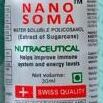Introduction
In the contemporary landscape of pharmaceuticals and cosmetics, the quest for enhanced bioavailability and improved stability is ever-growing. One innovative solution that has emerged is the use of nanoemulsions, particularly those incorporating long-chain alcohols. These specialized formulations offer significant advantages, transforming the way we approach drug delivery and cosmetic applications.
Understanding Nanoemulsions
Nanoemulsions are thermodynamically stable mixtures of oil, water, and surfactants, typically having droplet sizes in the range of 20 to 200 nanometers. Their small size not only leads to increased surface area but also improves the solubility and absorption of the active ingredients. Unlike traditional emulsions, nanoemulsions possess unique characteristics that enhance their performance in various applications.
Long-Chain Alcohols: A Key Ingredient
Long-chain alcohols, such as cetyl alcohol, stearyl alcohol, and behenyl alcohol, play a pivotal role in the formulation of nanoemulsions. These alcohols are fatty compounds that provide emulsifying properties and enhance the stability of the nanoemulsion. Additionally, they serve as penetration enhancers, facilitating the absorption of actives through biological membranes.
Advantages of Nanoemulsions in Drug Delivery
-
Improved Bioavailability: Many drugs suffer from poor solubility, which limits their bioavailability. Nanoemulsions can significantly increase the solubility of hydrophobic drugs, allowing for more efficient absorption in the gastrointestinal tract when administered orally.
-
Targeted Delivery: The small droplet size of nanoemulsions enables them to navigate biological barriers more efficiently. This capability is particularly beneficial for targeting specific tissues or cells in the body, which is essential in cancer therapy or localized treatments.
-
Controlled Release: By carefully tailoring the formulation, long-chain alcohols can modulate the release rates of the active pharmaceutical ingredients (APIs). This controlled release profile can improve therapeutic outcomes and reduce side effects.
- Enhanced Stability: Nanoemulsions are typically more stable than conventional formulations, reducing the risk of degradation over time. This stability is crucial for maintaining drug efficacy and shelf life.
Applications in Cosmetics
The cosmetic industry has also recognized the potential of nanoemulsions featuring long-chain alcohols. These formulations can provide numerous benefits for skin care, hair care, and other cosmetic products.
-
Better Skin Penetration: Long-chain alcohols enhance the absorption of active ingredients in skincare formulations, leading to more effective moisturizers that can penetrate the skin barrier and deliver hydration where it is needed most.
-
Improved Texture and Feel: Nanoemulsions can result in lighter, smoother formulations that feel great on the skin. This is particularly desirable in products like creams and lotions, where texture can significantly influence user experience.
-
Enhanced Stability of Active Ingredients: Many vitamins and antioxidants are sensitive to light and air. Nanoemulsions can encapsulate these ingredients, protecting them from degradation and ensuring that they remain effective throughout the product’s shelf life.
- Longer-Lasting Effects: The controlled release properties of nanoemulsions allow for sustained moisturizing effects, which can benefit consumers looking for long-term skin improvements without the need for frequent application.
Challenges and Future Directions
While the advantages of nanoemulsions are compelling, several challenges remain. Formulating effective nanoemulsions requires a deep understanding of the physicochemical properties of both the active ingredients and the emulsifying agents. Furthermore, regulatory considerations regarding the safety and efficacy of these formulations must be addressed.
Looking ahead, ongoing research in nanotechnology and emulsion science is likely to yield even more sophisticated formulations. Innovations in surfactant technology, new long-chain alcohols, and alternative delivery methods will pave the way for groundbreaking developments in both drug delivery systems and cosmetic products.
Conclusion
The integration of nanoemulsions using long-chain alcohols into drug delivery and cosmetic formulations is revolutionizing these industries. By improving bioavailability, enhancing stability, and improving user experience, these advanced formulations hold promise for the future of pharmaceuticals and cosmetics. As research continues to advance, nanoemulsions are poised to become a staple in product development, meeting the modern demands of efficacy, safety, and consumer satisfaction.
